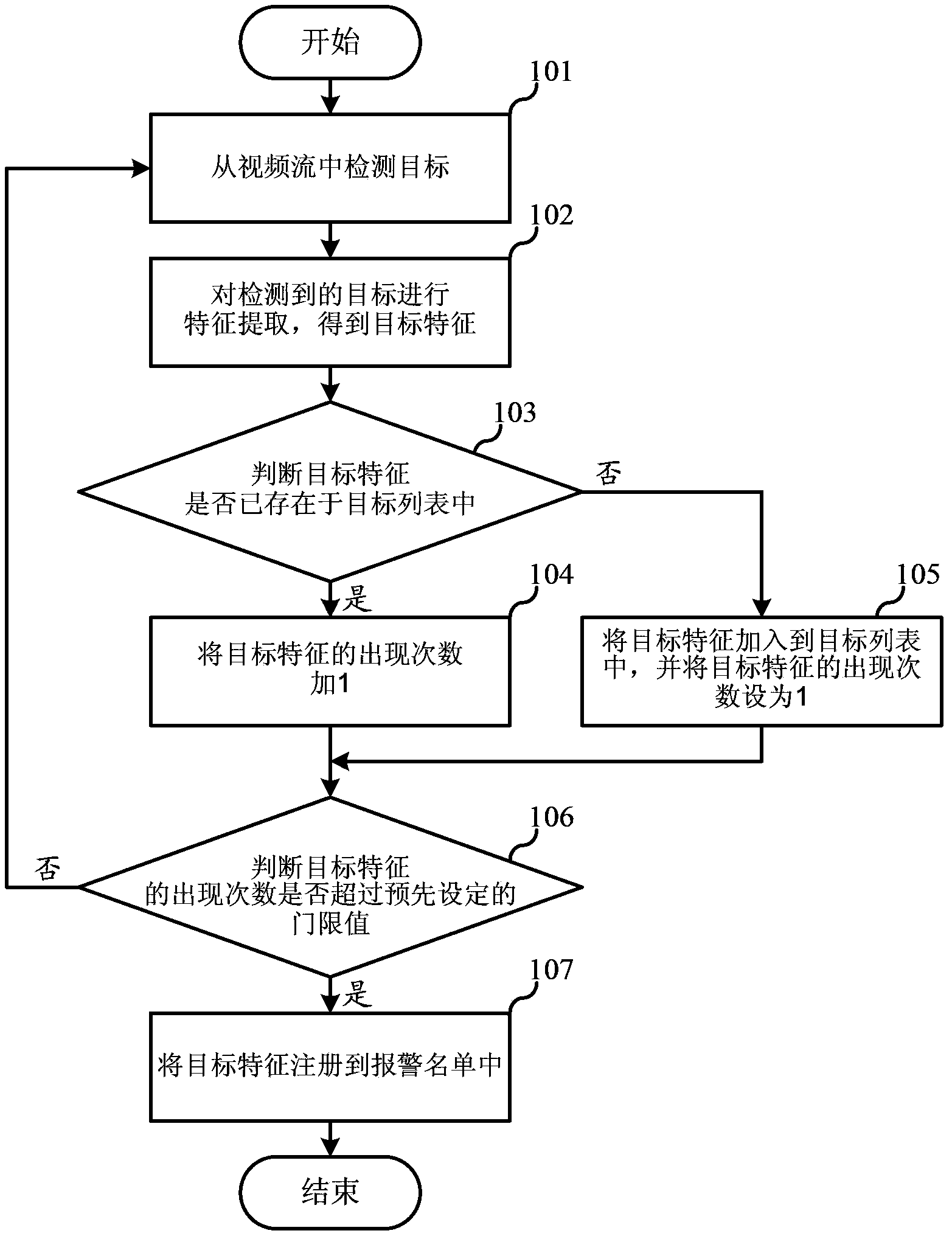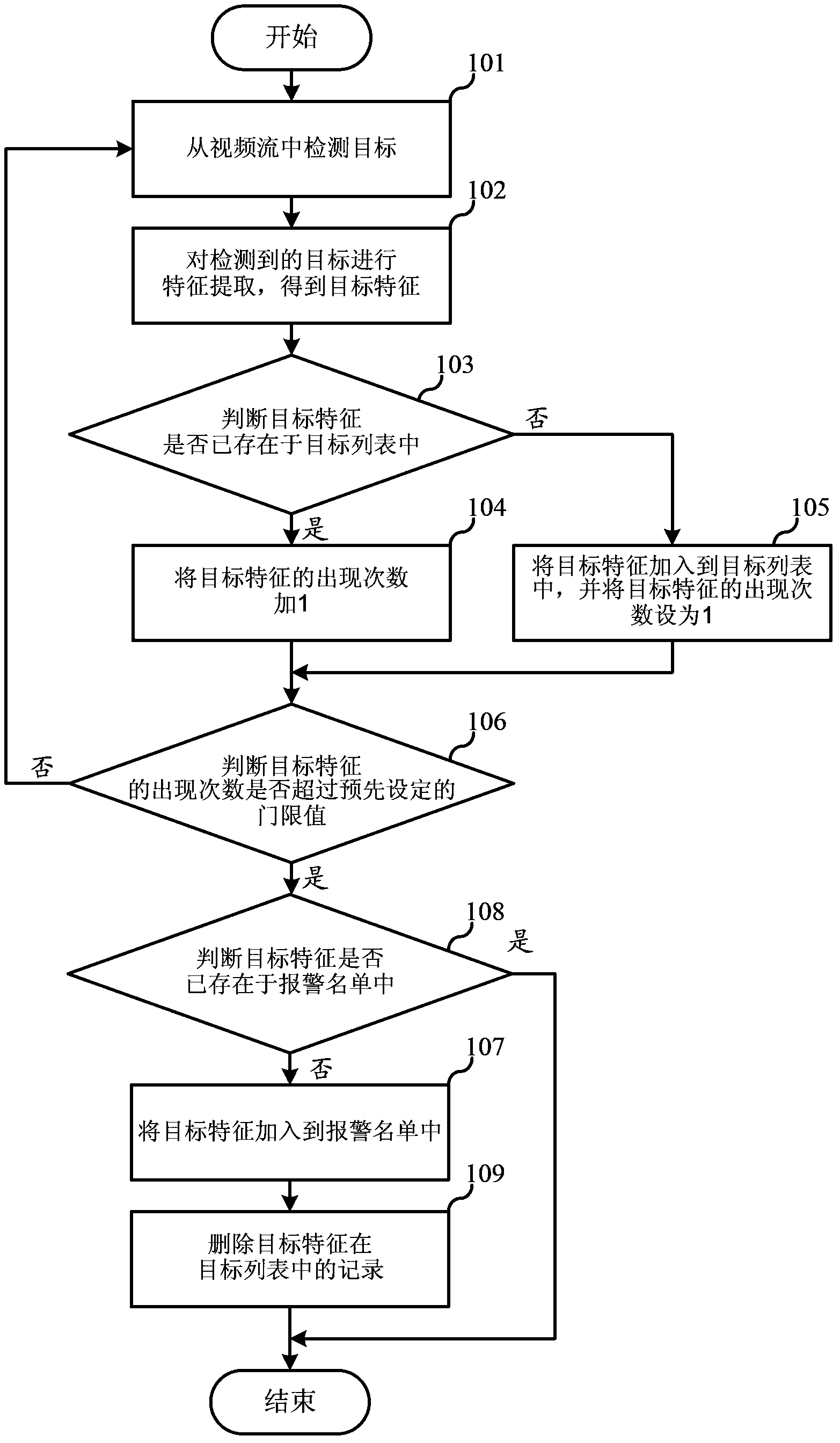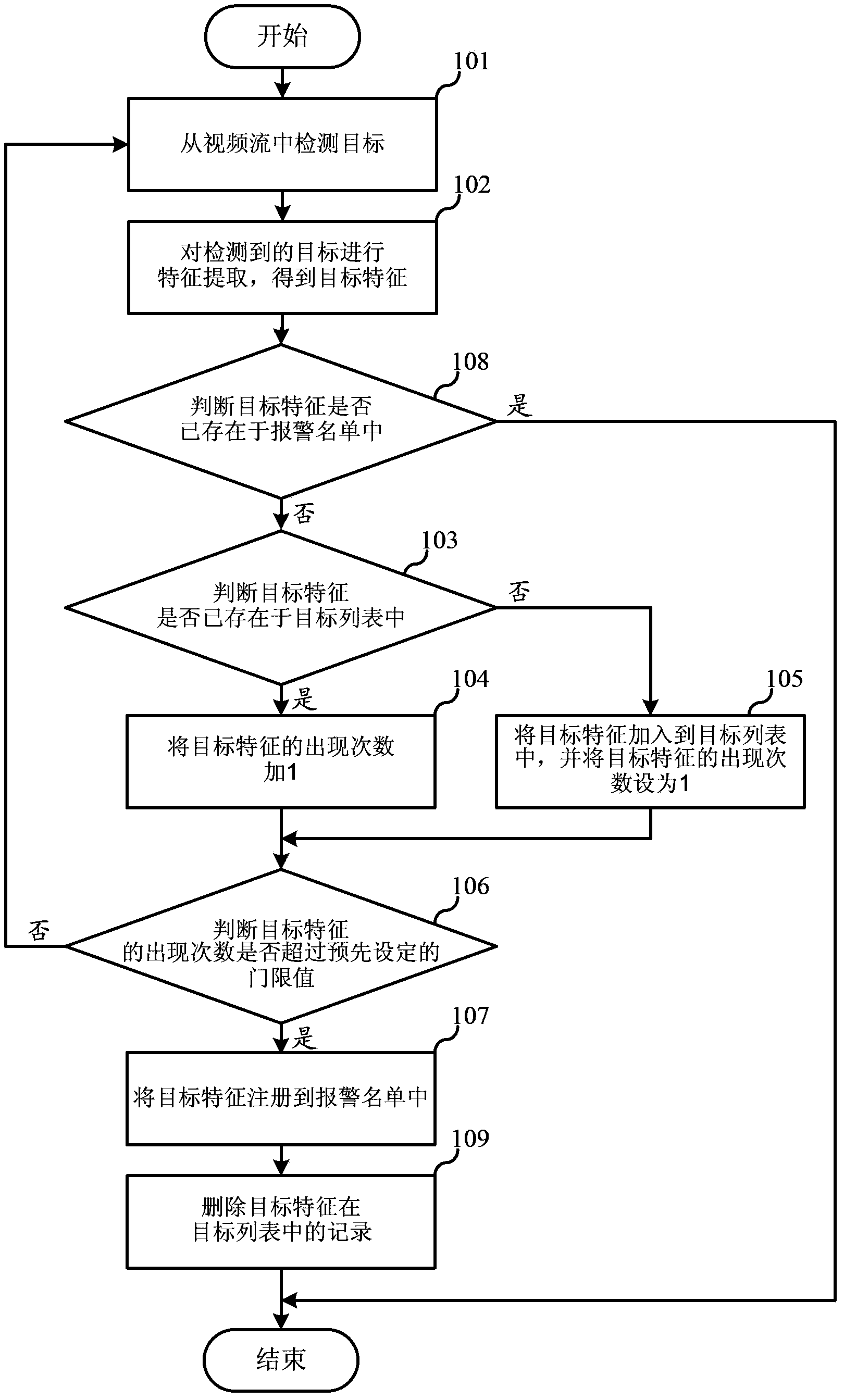Method and system for automatically finding and registering target in surveillance video
A technology for automatic discovery and monitoring of video, applied in character and pattern recognition, instruments, computer parts, etc., can solve problems such as inability to meet intelligence and real-time performance, and achieve the effect of saving storage space and reducing workload
- Summary
- Abstract
- Description
- Claims
- Application Information
AI Technical Summary
Problems solved by technology
Method used
Image
Examples
Embodiment Construction
[0030] In the following description, many technical details are proposed in order to enable readers to better understand the application. However, those skilled in the art can understand that without these technical details and various changes and modifications based on the following implementation modes, the technical solution claimed in each claim of the present application can be realized.
[0031] In order to make the purpose, technical solution and advantages of the present invention clearer, the following will further describe the implementation of the present invention in detail in conjunction with the accompanying drawings.
[0032] The first embodiment of the present invention relates to a method for automatic discovery and registration of objects in a surveillance video. figure 1 It is a schematic flow chart of the method for automatic discovery and registration of targets in the surveillance video.
[0033] Specifically, as figure 1 As shown, the target automatic ...
PUM
 Login to View More
Login to View More Abstract
Description
Claims
Application Information
 Login to View More
Login to View More - R&D
- Intellectual Property
- Life Sciences
- Materials
- Tech Scout
- Unparalleled Data Quality
- Higher Quality Content
- 60% Fewer Hallucinations
Browse by: Latest US Patents, China's latest patents, Technical Efficacy Thesaurus, Application Domain, Technology Topic, Popular Technical Reports.
© 2025 PatSnap. All rights reserved.Legal|Privacy policy|Modern Slavery Act Transparency Statement|Sitemap|About US| Contact US: help@patsnap.com



